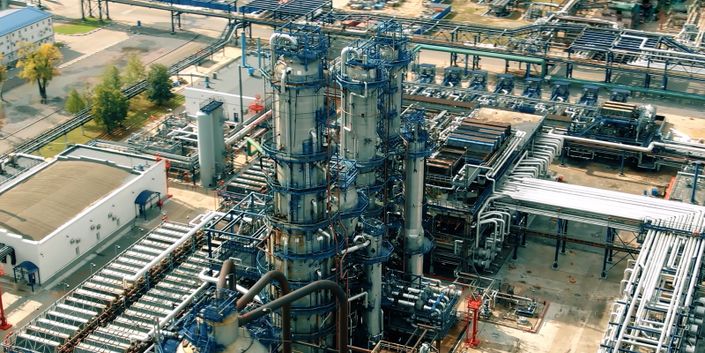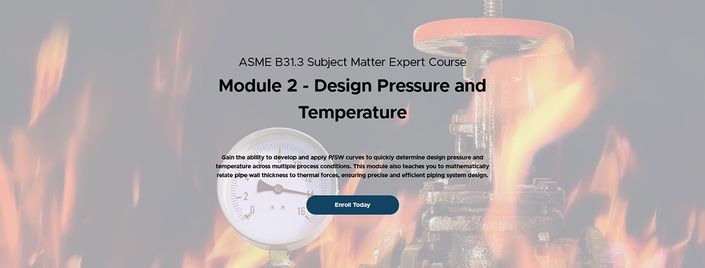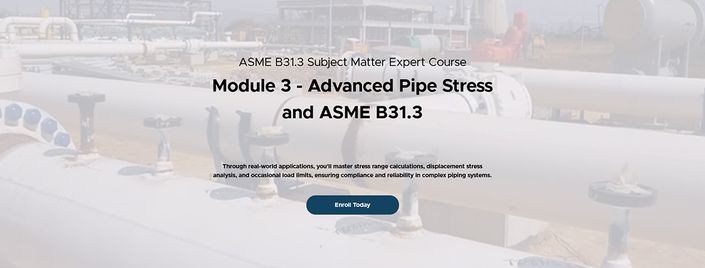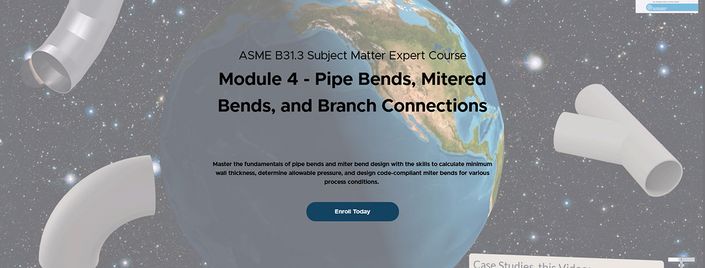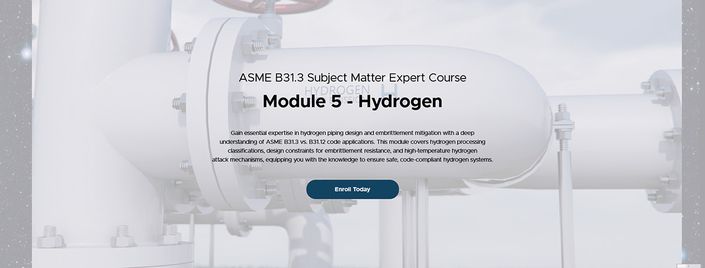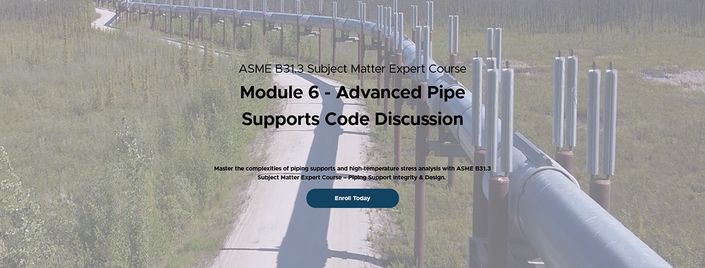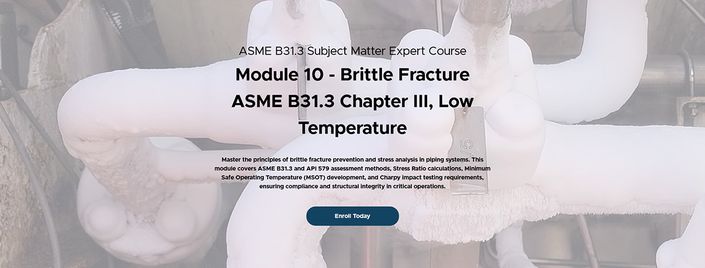
Module Description
This module provides a comprehensive understanding of piping vibration and pulsation analysis, focusing on mathematical modeling, FFT analysis, and mitigation techniques. Students will learn to solve vibration differential equations, calculate span lengths to prevent wind-induced galloping, and determine pump-induced vibration frequencies. The course also covers sizing and preloading pulsation dampeners, utilizing ASME B31.3 Appendix W for stress range adjustments, and conducting Root Cause Analyses (RCA) using FFT vibration data, ensuring the safe and efficient operation of piping systems.
Learning Objectives
After completion of this course, the student will earn Two (2) PE/PDH Credit towards being a Subject Matter Expert (SME).
When the student completes Module Eight: Vibration, the student will be able to:
- Write out the basic vibration differential equation of motion.
- Write out the solution to the differential equation.
- Correlate each component of the mathematical solution to the differential equation relative
to its physical component of actual vibration. - Calculate the maximum span length for a given piping with insulation to mitigate piping
galloping at a given wind speed. - Graphically present the Fast-Fourier Transform (FFT) time domain.
- Graphically present the Fast-Fourier Transform in the frequency domain.
- From given raw FFT data, both real and imaginary, calculate the peak-to-peak amplitude of
the measured vibration wave form associated with the given raw data. - Calculate the associated pressure pulse magnitude for a given reciprocating pump at a
predefined geometry, pressure and flowrate. - Select the optimum number of pump heads for vibration mitigation for a specified multiplex
reciprocating pump system. - Determine the associated pump frequencies for a specified reciprocating pump system for
use in pipe stress natural frequency calculations. - Initially size for procurement, a pulsation dampener for a given reciprocating pump system.
- Define the pulsation dampener pressure preload for this dampener.
- Apply ASME B31.3 Appendix W, Vibration, to a predefined vibration state, mechanical, flow-
induced or wave-induced. - Utilize Appendix W assessment results from above to increase the ASME B31.3 Stress
Range Factor, f to add value by calculating the associated pipe wall thickness. - List the 3 ways FFT vibration data can be used to develop Root Cause Analyses (RCA’s).
- Apply turbulent flow rho-v^2 data toa given pipe flow for mitigation of turbulent flow piping
vibration.
Meet Your Instructor
Subject Matter Expert: Rotating Equipment, Vibration, Fatigue, and Fracture Mechanics
Launch Special: Enroll in the full course for $1,995
(over $500 in savings).
Offer expires May 2, 2025
Our On-Demand Technical Courses
Advance your skills and set yourself apart in the industry.


